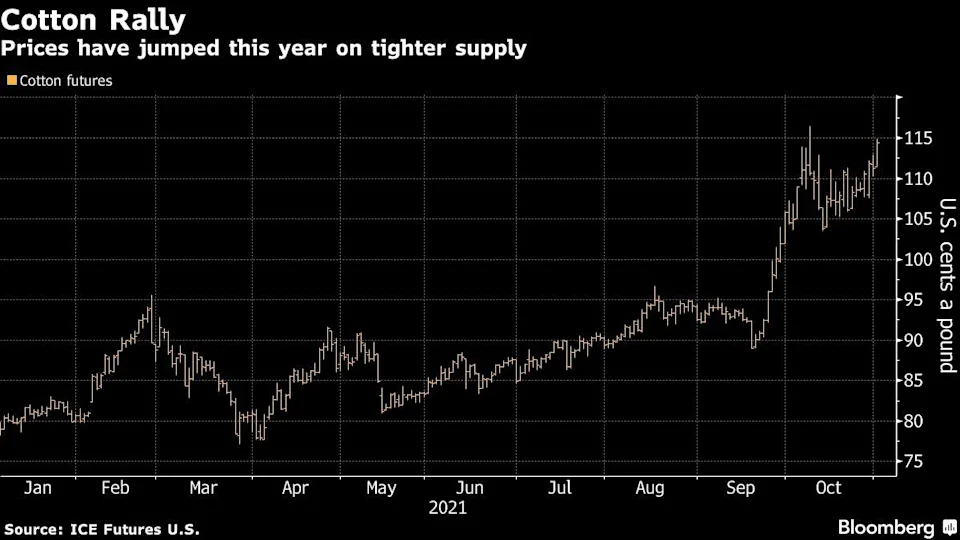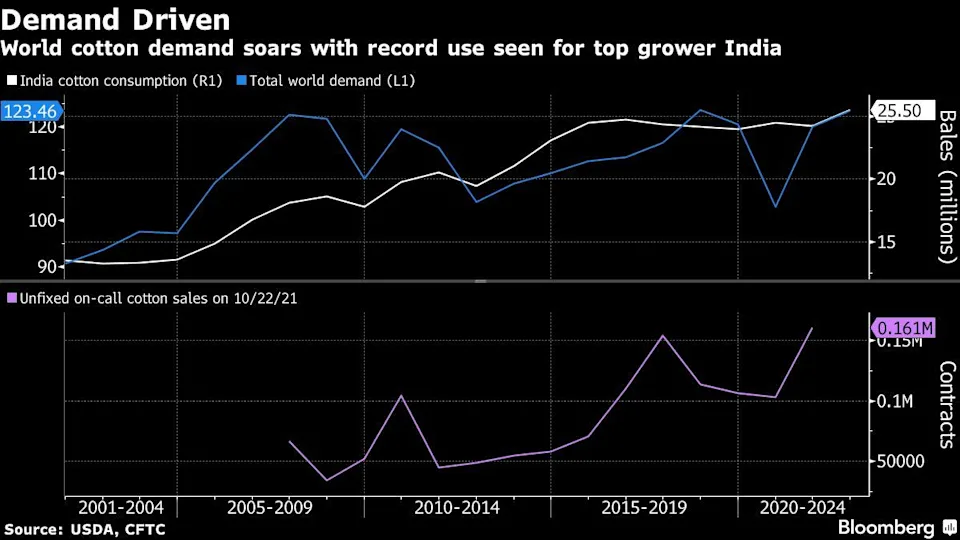Marvin G. Perez
(Bloomberg) -- Cotton prices surged near a 10-year high as forecasts for lower Indian supply heightened concern that a global deficit will get worse, threatening to increase costs for clothing.
Most-active futures climbed as much as 3.3% in New York, approaching a peak set in early October. The Cotton Association of India on Saturday said the country’s exports will drop by 38% in the 2021-22 season, while researcher Cotlook last week raised its estimate for a global deficit, citing lower output and more demand.

Harvesting in U.S. growing regions around the Mississippi Delta may see some rain disruption this week, according to Drew Lerner, the president of World Weather Inc. Southeast areas will be drier, which they need, after last week’s heavy rains probably hurt fiber quality in parts of Florida, Alabama and Georgia.
Prices have jumped more than 45% this year, cutting into margins for apparel makers and threatening to raise prices for everything from t-shirts to jeans. Costlier clothes would add to inflationary pressure for consumers already facing high food and energy prices.
“We’re expecting domestic consumption to be very strong with pandemic cases dropping and Diwali around the corner,” independent analyst Ajay Kedia said by phone, referring to India. “I’ve been visiting a lot of textile showrooms and demand is very good from the customer side -- around 110% of pre-pandemic levels.”

A surge in demand and lower crops in places like top importer China will spur a second world deficit in 2021-22. Top grower India will see domestic use climb to record. Meantime, there are signs bollworm disease will curb output in that country’s province of Punjab, local press reported over the weekend, citing government officials.
Demand is also very strong across other key textile exporters such as Vietnam, Pakistan, Indonesia, and Bangladesh. That typically means good demand for the coveted quality from top shipper U.S., where stockpiles are very tight.
Meantime, commercial traders are holding a huge short position, tracked as unfixed cotton sales that must be closed by purchasing a futures contract. That’s become the biggest supportive factor for higher levels, said consultant Ollie Cleveland, a Mississippi State University economics professor emeritus.
“As long as yarn prices remain strong then demand will continue to be the principal driver,” he said. “At times the market is not trading physical cotton as much as it is trading the textile mills need to fix the price of cotton already contracted.”
While the surge may bring bigger global production in coming years, for now the situation points to higher prices toward $1.25 a pound, he said.
Cotton for March delivery gained 3.5% to $1.1503 a pound at 11:57 a.m. in New York.
In other soft commodities, raw sugar and arabica coffee also advanced in New York, with coffee rising as much as 2.8%.


